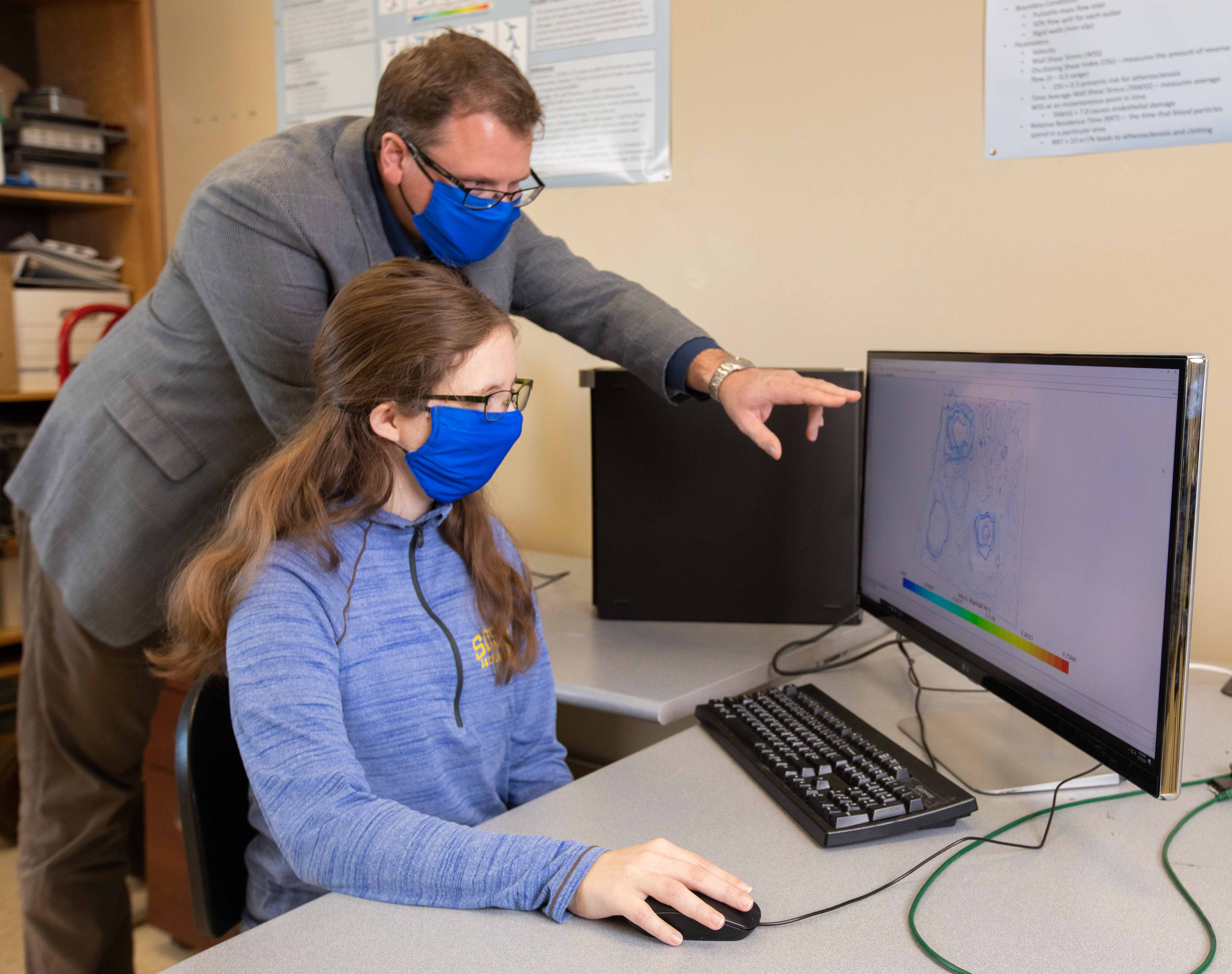The center aims to help businesses address technical and economic challenges utilizing faculty expertise and university equipment and testing capabilities, according to director Stephen Gent, a professor in the Department of Mechanical Engineering. EDA Center researchers secured a two-year, nearly $300,000 U.S. Department of Commerce supplemental grant to offer services to area businesses aimed at mitigating COVID-19.
Also working on EDA Center projects are assistant professor Yue Zhou of the Department of Electrical Engineering and Computer Science; professor Teresa Hall, head of the Department of Construction and Operations Management; and Jennifer Quail, director of entrepreneur support at the Brookings Economic Development Corporation. The center, which has been engaging South Dakota businesses and stakeholders pertaining to precision agriculture technologies and sustainable energy for more than two years, is expanding its offerings to serve a broader client base.
“The novel coronavirus is spread through aerosol droplets that can travel at least 6 feet in an indoor environment and perhaps even as much as 20 feet,” Gent said. Understanding how the air handling system and the presence of objects in the room, such as Plexiglas barriers and room dividers, change airflow patterns can help business owners protect their employees.
A facility’s heating, ventilation and air conditioning system can be designed or retrofitted to disinfect the return air using ultraviolet rays or antiviral aerosols, pull more fresh air into the facility and change airflow rates to reduce droplet spread, he pointed out. During the last decade, Gent has done fluid flow modeling on projects ranging from optimizing grain dryer operations to modeling blood flow through implantable cardiovascular devices.
Businesses can access to a wide range of EDA Center services by emailing [email protected].
At the most basic level, the center provides free information on best practices and guidelines through a video or a written document. “This is what the CDC recommends plus additional guidance, such as how to provide increased sanitation and check building ventilation,” Gent said. One undergraduate student, a graduate student and a research associate are also working on the COVID-19 project.
“For a nominal charge, we can do a site visit to assess whether the ventilation system is working as advertised, including supplying fresh air to the building, and then make recommendations to reduce the risks from COVID-19 and other airborne viruses, ” Gent explained. “We are going to be very cost-conscious for our clients,” he added.
“We will go to the facility, look at the ventilation and come up with flow models. We will see if there are any stagnant regions in the facility and recommend changes to the room layout and the ventilation system, based on the client’s needs and desires,” Gent said. The client can then consult with heating, ventilating and air conditioning suppliers to address and implement those changes.
“We anticipate that once we do several site visits, we will see patterns emerge. Through these scientifically backed findings, we will be able to make suggestions that industries at large can consider,” Gent said. Through these services, he also hopes to build partnerships that will help match university expertise to solve real-world industry challenges to foster economic development.
“We want to make the EDA Center a one-stop shop for businesses with technical challenges to connect with university resources,” he concluded. Further details about the EDA center are available at https://www.sdstate.edu/eda-university-center.


